- Home
- Clive Cussler
Odessa Sea Page 21
Odessa Sea Read online
Page 21
“You two don’t look the worse for wear after your escapades this afternoon,” Perlmutter said. “You gave us quite a scare after you disappeared with that armed woman in pursuit.”
“We realized the fire alarm was a staged diversion so someone could get their hands on the file that Dr. Trehorne discovered,” Summer said.
“Who on earth would go to such extremes for some dusty old documents?” Trehorne asked.
“The same people who blew apart the Canterbury,” Dirk said. “The Russians.”
“I wish I’d have known that when I gave my report to the police,” Trehorne said. “Julien tells me you were forced to hand over the Archives’ folder on Sir Hunt.”
“I’m afraid so,” Summer said.
“That’s a pity. I didn’t have a chance to review the entire contents. I phoned Julien when I came across a report of Hunt taking a top secret document to St. Petersburg and I presumed we would find our answer.” He set down his tea and looked out the window at the lights across the Thames. “My friends at the Archives won’t be pleased, either.”
“We may have lost the original, but we do have this,” Summer said. She opened the manila envelope and pulled out a thin stack of page-sized photos.
Trehorne gazed at the top photo, of a letter handwritten by Hunt. “That was the first document in the binder.”
Summer nodded. “I found a photographer on the run who snapped pictures of the binder’s contents. Hopefully, he didn’t miss any pages.”
“Wonderful thinking,” Julien said.
“Oh, it cost us.” Dirk cast a sideways glance at Summer.
Trehorne held up the first photo and smiled. “This is almost as clear as the document itself. Let’s see what else we have in here.”
It didn’t take them long to filter through the photos, most of which captured mundane administrative documents. Then they came to one marked Proposed Treaty of Petrograd. Trehorne skimmed the three-page draft, then passed it to Perlmutter with a shaky hand.
“Take a look at this, Julien. Quite remarkable. I think I may require a drink.” He rose to locate his bottle of Balvenie.
Perlmutter began reading the document aloud. It was a draft copy of the treaty transferring Russian mineral rights to Great Britain in exchange for securing the Romanov family wealth. The room remained silent as Perlmutter read to the end.
“That’s unbelievable,” Dirk said. “The Romanovs shipping their gold to the Allies is one thing, but assigning a piece of their mineral rights for a century to come . . . ?”
“Tsar Nicholas must have considered it a last-ditch effort to save the crown,” Trehorne said. “Turning to Britain for help wouldn’t have been unusual. After all, King George V and Nicholas II were cousins. But it is still a remarkable proposal.”
“Could the treaty still be enforced after all these years?” Summer asked.
“I’m sure an army of the Queen’s best attorneys would try to find out, particularly if they could beat the expiration date,” Trehorne said. “With billions potentially at stake, there would certainly be an incentive to try.”
“But that’s only if the deal was signed,” Perlmutter said, “and the Romanov gold was actually transferred to Great Britain.”
Trehorne retrieved four glasses and poured a tall shot of Scotch in each. Downing his own glass, he picked up the first photo and studied it again.
“It’s dated February tenth, 1917,” he said. “That’s two days before Hunt set foot on the Canterbury in Liverpool and sailed to Archangel. Seems likely he took it to the Tsar to sign. I found a Foreign Office report in another file that Hunt did in fact have a meeting with Nicholas, but no details were provided.”
“There seems to be no record of such a treaty,” Perlmutter said, “so Nicholas must never have signed it.”
“I disagree,” Dirk said. “I think the treaty was in fact signed and that Hunt was returning to England with a copy on the Canterbury.”
“No way to prove that,” Trehorne said.
“We already have the proof,” Dirk said, “and that’s with the Russians. They arrived at the wreck site of the Canterbury, claimed it was theirs, and proceeded to blast it apart.”
“They might have believed the ship was carrying gold,” Summer said.
Dirk shook his head. “There’s three reasons why they didn’t. First, they set their explosives to blow up the ship’s superstructure. Any quantity of gold would have been carried in the lower holds, so they should have been blasting open the deck or a side hull.”
“They may have been working their way there,” she said, “or just wanted to eliminate us first.”
“True, and they might still be there blasting it open as we speak. But I think not, for the second reason. The Russian on the submersible who handled the demolition is now here in London. He’s tracking our movements and stealing historical documents from the National Archives.” He tapped the stack of photos.
“There’s logic to what you say,” Perlmutter said. “The Russians may have blown up the Canterbury’s superstructure because that’s where Hunt would have been berthed. If he was carrying a signed treaty copy in a diplomatic pouch, or even a heavy leather valise, there is at least a possibility it could have survived the sinking.” He looked at Dirk and Summer. “They know you two were suspicious about the wreck and may have been trying to circumvent your discovery of the treaty.”
“And the associated Romanov treasure that was to be sent to England,” Trehorne said.
“Indeed,” Perlmutter said.
Summer looked to her brother. “You said you had three reasons. I counted only two.”
“Our encounter with Viktor Mansfield today. Do you remember what he said when you mentioned the Canterbury’s gold?”
“He said there is no more gold aboard her. But if the treaty was signed and no gold was shipped on the Canterbury, then where did it go?”
“Probably captured by the Bolsheviks, along with the rest of the Romanov assets, when they overran St. Petersburg a short time later,” Perlmutter said.
Trehorne cleared his throat. “Perhaps not.” He held up the final photograph. The image depicted a typewritten letter from Hunt to an Admiral Ballard. The letter was red-lined, with a few handwritten word changes, indicating a draft copy.
“Please read it to us, Charles,” Perlmutter said.
“It’s a letter dated February eleventh, 1917, addressed to Rear Admiral George Ballard, Commander, Malta Dockyard,” Trehorne said.
“Dear Admiral.
“With approval from First Sea Lord Jellico, please station HMS Sentinel off Epanohoron Cape by 27 February, 06:00, for possible rendezvous with Pelikan. Transport to Liverpool via G to follow, at RN discretion.
“Yours obediently,
“Sir Leigh Hunt, Special Envoy to Russia,
“The Foreign Office”
“My, my,” Perlmutter said. “That certainly sounds like they were up to something, if this Pelikan is a Russian vessel.”
“Quite so. Let me see what I can find on these two ships.” Trehorne walked to the other room, perused his library for a few minutes, and returned with a pair of hardcover books and an old atlas of the Mediterranean.
“Let’s start with vessels of the Russian Imperial Navy.” He opened the first book. “The Pelikan. Yes, here it is. It was actually a submarine. One of the Bars class, the largest of the Russian subs, at sixty-eight meters and six-hundred-and-fifty-ton displacement. Her hull was laid down in September 1915 and she entered service the following April, assigned to the Black Sea Fleet. The Pelikan supported the Caucasus Campaign and saw action off the Danube in 1916. She was listed as missing in action and presumed sunk by Turkish warships off Chios in February 1917.”
“Chios, Greece?” Perlmutter said. “She must have snuck through the Bosphorus and the Dardanelles.”
�
�A risky move during the war,” Dirk said. “Prompted by special cargo?”
“She was a large boat for the day, so theoretically she could have carried a sizable cargo of bullion,” Trehorne said. “A crafty move, if that’s what it was, sliding it right under the nose of the Ottomans.”
“Nicholas may not have had much choice,” Perlmutter said. “The Imperial gold reserves were held in Moscow and St. Petersburg. Perhaps he knew that St. Petersburg was about to fall, and that it was too risky to send the gold north. There was still the overland route to Vladivostok, but I believe his loyalist forces were strongest in the south.”
“That is true,” Trehorne said. “The rise of the loyalist White Army was centered in what is now Ukraine. So in the waning hours of Nicholas’s reign, that may have been the safest route.”
“Where is this Epanohoron Cape, the designated rendezvous point?” Summer asked.
Perlmutter consulted the atlas. “It’s the northern point of the Greek island of Chios. The same region where the Pelikan was listed as sunk,” he said with a raised brow.
“If she sank in February, then it is questionable whether she made her rendezvous with the Sentinel,” Dirk said.
Trehorne opened the second book. “Let’s see what the Royal Navy has to say about our second vessel. Here it is. The HMS Sentinel was a scout cruiser built in 1904. She served in the Mediterranean Fleet during much of the war, based out of Malta. She struck a mine and sank off Sardinia in March 1917.”
“A couple of unlucky vessels,” Summer said.
“She sank in March,” Dirk said. “That means she came nowhere close to sailing to Liverpool after the rendezvous.”
“Quite right,” Perlmutter said.
“Which means the gold is still on her—or, more likely, the Pelikan,” Summer said, excitement in her voice.
Trehorne nodded. “It would seem to be a strong possibility.”
Summer looked at her brother. “What do you say? It’s a nice time of year to take a visit to the Mediterranean.”
“That sounds good to me, but there’s one problem.” Dirk gazed at the picture of the Russian submarine. “We’re not likely to be the only ones making the trip.”
47
Sixty miles east of Odessa, a mud-splattered pickup turned off a narrow dirt road and into a pasture. The flat property was no different than the neighboring farms that stretched as far as the eye could see except for two vehicles parked behind a strand of trees. One was a large green semi-trailer truck, the other a sleek Peregrine unmanned aerial vehicle.
Martin Hendriks emerged from the trailer with an assistant and greeted the driver. “You are right on time.”
“Colonel Markovich sends his regards.”
“Was the delivery made without incident?”
The driver, an overweight man with a thick beard, nodded. “Yes, the Russians handed them over to us in Sochi. They thought we were dockworkers putting them on a ship to Africa.” He laughed. “They have no idea that they’ll be seeing them again.”
He walked to the back of the pickup, removed a tarp, and uncovered four Vikhr laser-guided antitank missiles, commonly deployed on Russian attack helicopters. “We accepted delivery of twelve missiles and, per your directive, kept eight for our use.”
“Can you help load two onto our trailer,” Hendriks said, “and the other two onto the drone?”
“Of course.”
The driver and Hendriks’s assistant loaded two of the one-hundred-pound missiles into a hidden storage compartment on the trailer, then attached the remaining two on the Peregrine’s underwing launch racks.
As the driver climbed back into his pickup, Hendriks stuffed a wad of Ukrainian currency into the driver’s hands. “Tell Colonel Markovich to put the other eight to good use.”
“We will,” the man promised, then drove away.
Hendriks inspected the armed drone, then turned to his assistant. “Gerard, let’s launch the Peregrine.”
Gerard wheeled out a radio control console, which Hendriks used to start the drone’s motors. The vehicle rolled forward and easily took to the air under its wide flared wings. Hendriks had it circle the field a few times, then sent it south. He switched off the local radio signal and transferred guidance control to a commercial satellite system relay. By the time the drone reached the Black Sea coastline a few miles away, it was cruising at twelve hundred meters.
Gerard opened a laptop and pulled up a map of the Black Sea showing green triangles that marked the locations of GPS-monitored commercial ships. He zoomed in on the coastal region near Odessa and studied a myriad of vessels.
“Mr. Hendriks, I show two Russian-flagged ships. One is a tanker, the Nevskiy, near the mouth of the Dnieper. The other is a freighter, the Carina, which appears en route to Istanbul.”
“Let’s take a look at the freighter. How far off is she?”
“Just under fifty kilometers. We’ll catch her before dark.”
Hendriks nodded.
Gerard programmed the freighter’s speed, direction, and coordinates into the flight control system. A half hour later, a red freighter appeared on the drone’s long-range camera. Hendriks took over manual control and approached the ship from the stern while maintaining a covert distance.
The Peregrine’s camera showed a small bulk carrier riding low in the water, its white, blue, and red Russian flag flapping at the sternpost. Hendriks turned the drone away and let Gerard program the vehicle to fly in a slow holding pattern.
“That will make for an acceptable target,” Hendriks said, stepping from the console. “Let’s engage in about five hours.”
The Dutchman retired to a small cabin that stood at one end of the trailer. At two in the morning, he awoke and returned to the console. The Peregrine was trailing the Carina by three kilometers, but it was close enough for Hendriks to lock on the drone’s laser targeting system to the freighter’s bridge.
“How is the surrounding traffic?” he asked.
“I’ll check.” Gerard yawned and consulted his computer. “The nearest vessel is twenty kilometers away, heading north.”
Hendriks nodded, then pressed a pair of red buttons. A hundred kilometers away, the two Vikhr missiles whooshed off the Peregrine and rocketed toward the ship. Hendriks held the camera tight on the freighter as the missiles struck in tandem at the rear of the Carina’s blockhouse. The bridge structure disintegrated in a bright fireball that was quickly swallowed by the night sky.
Hendriks watched for several minutes, then passed the controls to Gerard. “It will appear as an internal accident. Move the Peregrine off thirty kilometers to a remote section of sea. At dawn, bring her back to the area at low altitude and search for survivors. Be sure and run video when you find them. Hopefully, we’ll be the first to call it in to the Ukrainian Coast Guard.”
Gerard quietly nodded, then stared with discomfort at the sinking ship.
Hendriks felt no such sensation. He returned to his cabin bed and slept like the newly dead until morning.
48
The two ships slogged through a heavy rain, running parallel courses. Each towed a side-scan sonar towfish on two hundred meters of electronic cable. Working together, they took less than twelve hours to survey thirteen square kilometers of seafloor—and locate the remains of Alexander Krayevski’s aircraft.
Valentin Mankedo stepped to the sonar station wedged into a corner of the Besso’s bridge. Renamed the Nevena, the salvage ship looked like a different vessel. Several deck cranes had been removed and her moon pool covered with a temporary cover. Plywood bays had been added about the main deck to alter her topside appearance, plus a fake funnel was added well aft of the functioning one, which had also been altered. A re-spray of paint from gray to blue completed the Besso’s transformation. Mankedo knew it would deceive any casual observer.
“She should be coming up any second
now,” Vasko said from a seat in front of the sonar monitor.
Archeologist Georgi Dimitov joined Mankedo in watching the screen. Dimitov moved unsteadily, his ghost-pale complexion revealing a losing fight with seasickness.
On the monitor, a gold-tinted image of the seafloor scrolled by, the signal fed from the towfish. Gradually, a black linear object appeared on the screen, taking the shape of a thick letter T. It took little imagination to see the shadow as the remains of a large airplane. One wing and part of the tail were absent, but the rest of the aircraft appeared intact, sitting upright on the bottom.
“What do you think, Georgi?” Mankedo asked.
“Twin motors on the remaining wing is a positive indicator.” Dimitov tried to focus on the moving image. “Can you determine the dimensions?”
Vasko used a computer mouse to drag a line along the image.
“Fuselage is thirty meters long. The wing looks to be about twenty meters.”
Dimitov nodded. “Those are the correct parameters.”
Mankedo stared at the monitor as the plane’s image scrolled past, deep in thought. “I had heard stories from the old-timers about a lost Russian bomber that supposedly went down near Durankulak in the 1950s. Apparently, the legend is true and only the location is wrong.”
“Do you think its payload remained intact?” Dimitov asked.
“The fuselage appears whole,” Vasko said, “but no telling if it was jettisoned. We’ll have to take a closer look to find out.”
Mankedo ordered the Besso to drop a buoy to mark the position, then turn around and make another pass.
“The history I found is that local fishermen in Durankulak were quietly hired by the Russians to search for debris from the aircraft,” Dimitov said. “My uncle was a young crewmate on one of the boats. That’s why I knew the significance of the body found on the Ottoman wreck. My uncle said they never found any sign of the plane, only the rumor of an oil slick spotted in the sea near the Romanian border.”

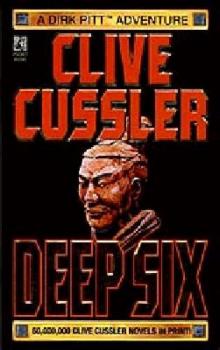 Deep Six
Deep Six Odessa Sea
Odessa Sea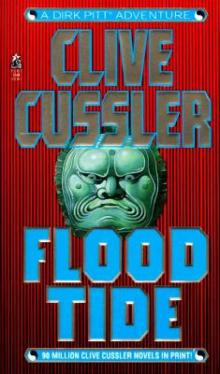 Flood Tide
Flood Tide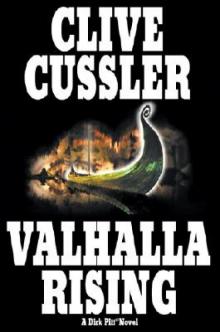 Valhalla Rising
Valhalla Rising Thriller 2
Thriller 2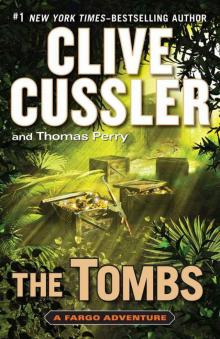 The Tombs
The Tombs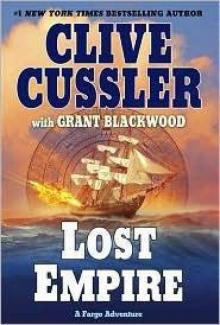 Lost Empire
Lost Empire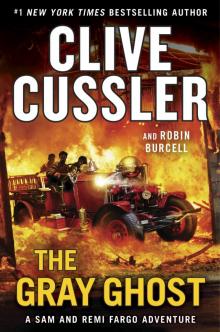 The Gray Ghost
The Gray Ghost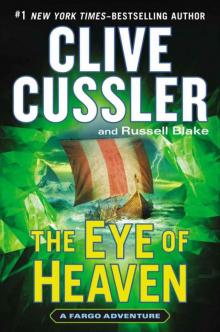 The Eye of Heaven
The Eye of Heaven Polar Shift
Polar Shift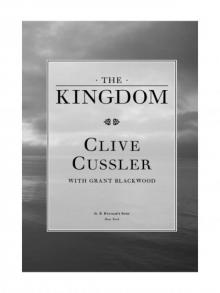 The Kingdom
The Kingdom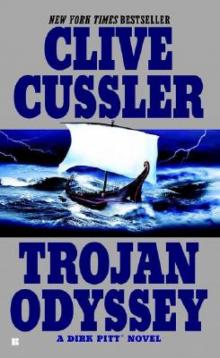 Trojan Odyssey
Trojan Odyssey Shadow Tyrants
Shadow Tyrants Nighthawk
Nighthawk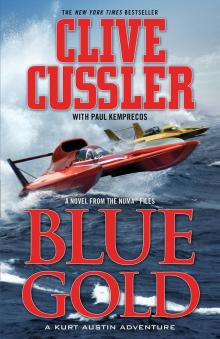 Blue Gold
Blue Gold Serpent
Serpent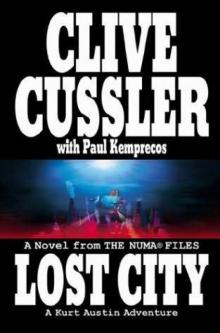 Lost City
Lost City The Gangster
The Gangster White Death
White Death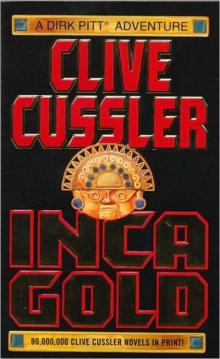 Inca Gold
Inca Gold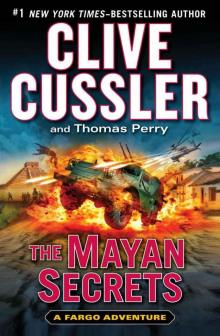 The Mayan Secrets
The Mayan Secrets The Pharaoh's Secret
The Pharaoh's Secret The Emperor's Revenge
The Emperor's Revenge Corsair
Corsair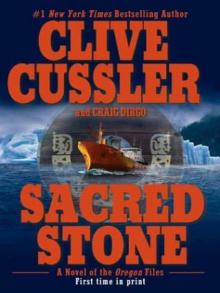 Sacred Stone
Sacred Stone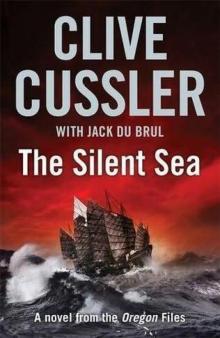 The Silent Sea
The Silent Sea The Rising Sea
The Rising Sea Black Wind
Black Wind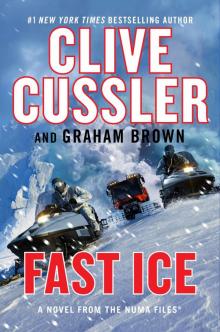 Fast Ice
Fast Ice Ghost Ship
Ghost Ship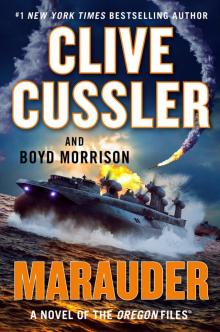 Marauder
Marauder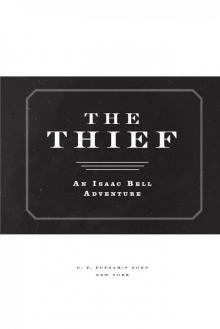 The Thief
The Thief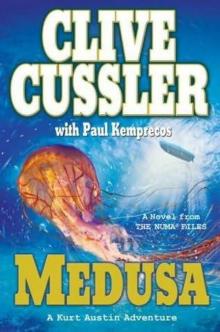 Medusa
Medusa Typhoon Fury
Typhoon Fury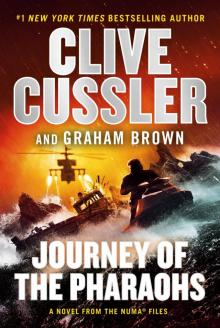 Journey of the Pharaohs
Journey of the Pharaohs The Navigator
The Navigator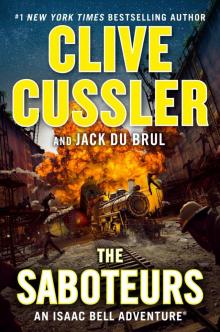 The Saboteurs
The Saboteurs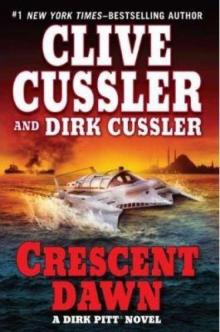 Crescent Dawn
Crescent Dawn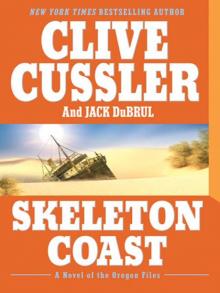 Skeleton Coast
Skeleton Coast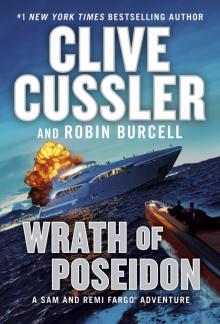 Wrath of Poseidon
Wrath of Poseidon The Mediterranean Caper
The Mediterranean Caper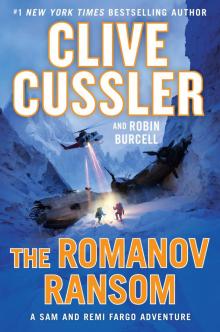 The Romanov Ransom
The Romanov Ransom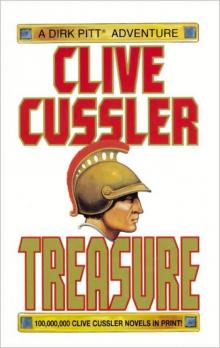 Treasure
Treasure The Race
The Race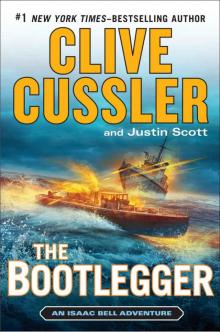 The Bootlegger
The Bootlegger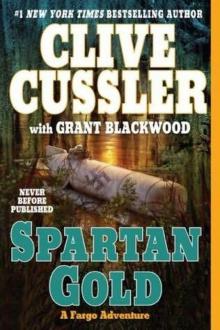 Spartan Gold
Spartan Gold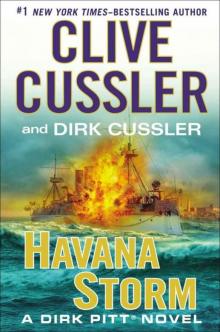 Havana Storm
Havana Storm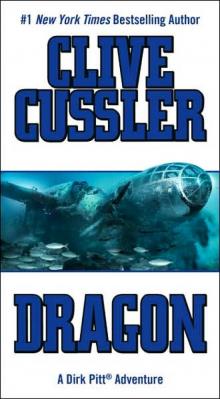 Dragon
Dragon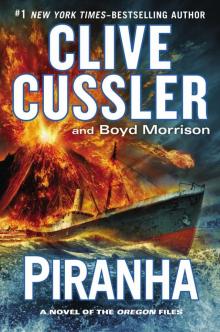 Piranha
Piranha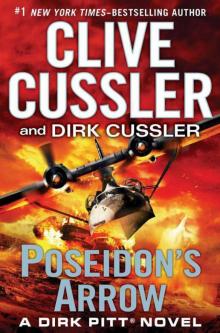 Poseidon's Arrow
Poseidon's Arrow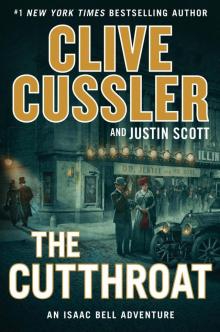 The Cutthroat
The Cutthroat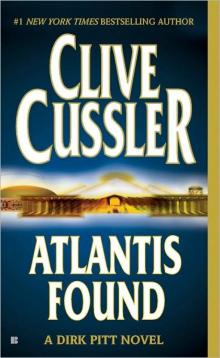 Atlantis Found
Atlantis Found The Jungle
The Jungle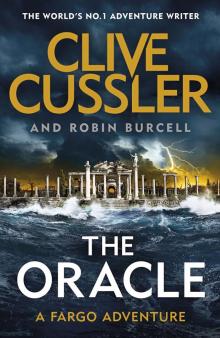 The Oracle
The Oracle Treasure / Dragon / Sahara: Clive Cussler Gift Set
Treasure / Dragon / Sahara: Clive Cussler Gift Set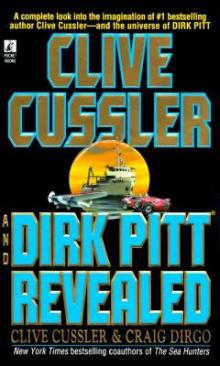 Clive Cussler and Dirk Pitt Revealed
Clive Cussler and Dirk Pitt Revealed The Sea Hunters
The Sea Hunters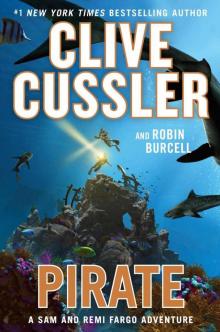 Pirate
Pirate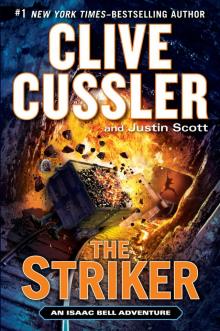 The Striker
The Striker Plague Ship
Plague Ship The Wrecker
The Wrecker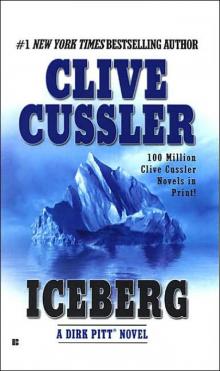 Iceberg
Iceberg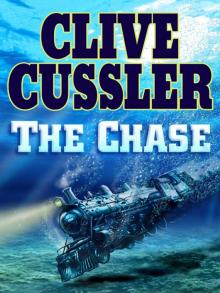 The Chase
The Chase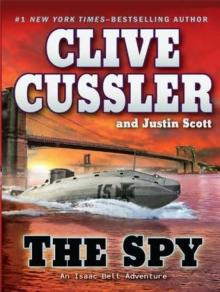 The Spy
The Spy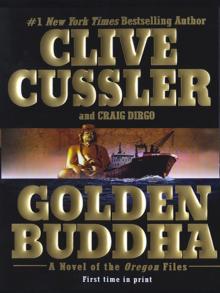 Golden Buddha
Golden Buddha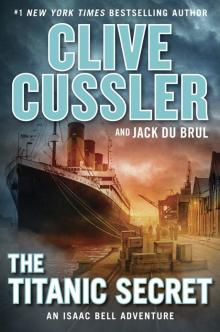 The Titanic Secret
The Titanic Secret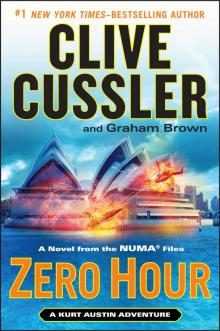 Zero Hour
Zero Hour Fire Ice
Fire Ice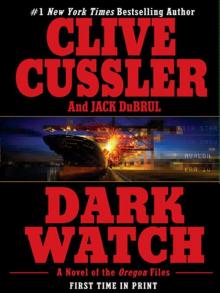 Dark Watch
Dark Watch The Storm
The Storm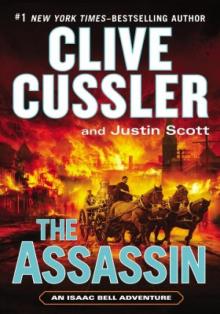 The Assassin
The Assassin Vixen 03
Vixen 03 Arctic Drift
Arctic Drift Night Probe!
Night Probe! Cyclops
Cyclops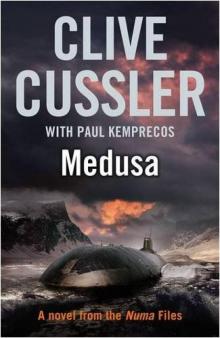 Medusa nf-8
Medusa nf-8 Shock Wave dp-13
Shock Wave dp-13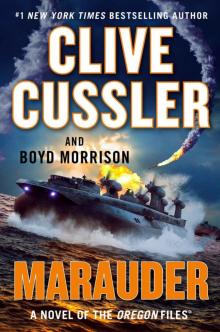 Marauder (The Oregon Files)
Marauder (The Oregon Files)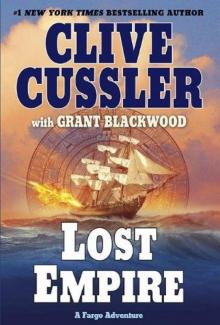 Lost Empire fa-2
Lost Empire fa-2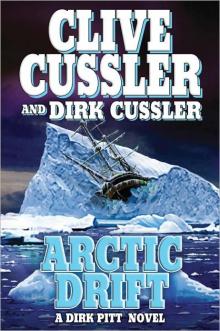 Arctic Drift dp-20
Arctic Drift dp-20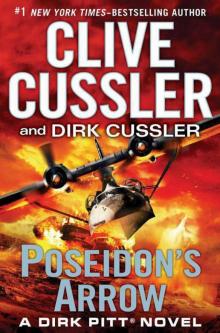 Dirk Pitt 22 - Poseidon's Arrow
Dirk Pitt 22 - Poseidon's Arrow Treasure of Khan dp-19
Treasure of Khan dp-19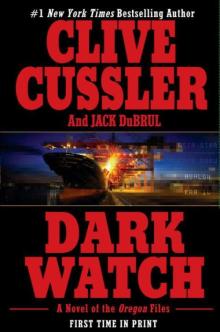 Dark Watch of-3
Dark Watch of-3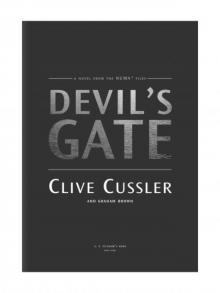 Devil's Gate
Devil's Gate The Sea Hunters II: More True Adventures with Famous Shipwrecks
The Sea Hunters II: More True Adventures with Famous Shipwrecks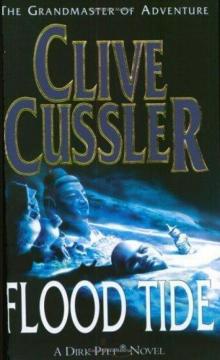 Flood Tide dp-14
Flood Tide dp-14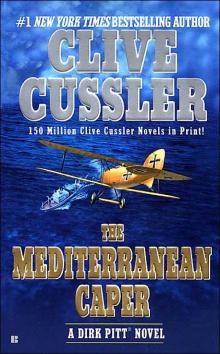 The Mediterranean Caper dp-2
The Mediterranean Caper dp-2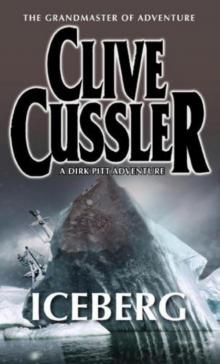 Iceberg dp-3
Iceberg dp-3 Sahara dpa-11
Sahara dpa-11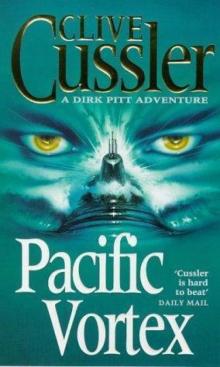 Pacific Vortex! dp-1
Pacific Vortex! dp-1 Deep Six dp-7
Deep Six dp-7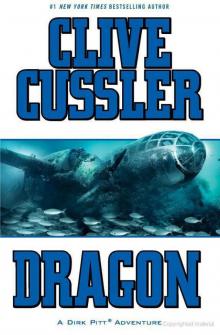 Dragon dp-10
Dragon dp-10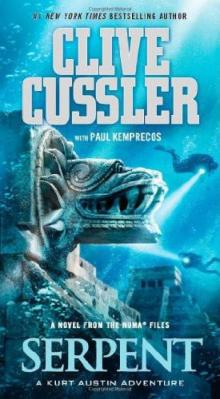 Serpent nf-1
Serpent nf-1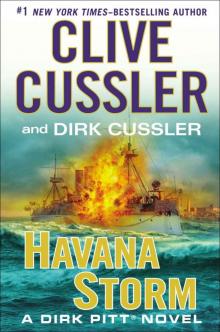 Havana Storm (Dirk Pitt Adventure)
Havana Storm (Dirk Pitt Adventure)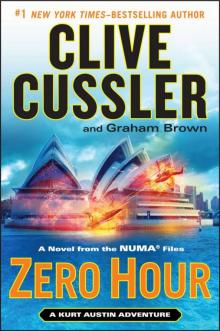 Zero Hour nf-11
Zero Hour nf-11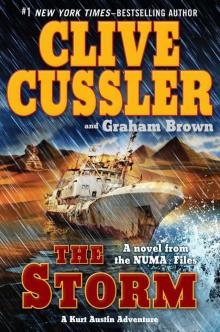 The Storm nf-10
The Storm nf-10 The Thief ib-5
The Thief ib-5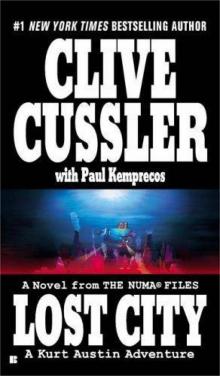 Lost City nf-5
Lost City nf-5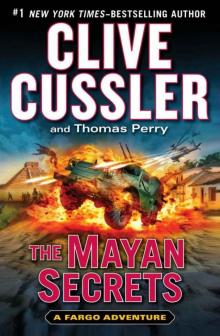 The Mayan Secrets fa-5
The Mayan Secrets fa-5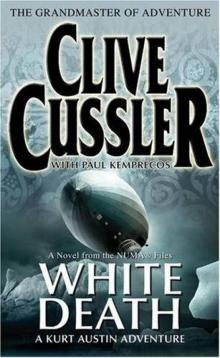 White Death nf-4
White Death nf-4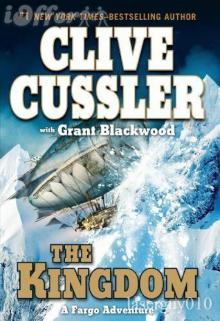 The Kingdom fa-3
The Kingdom fa-3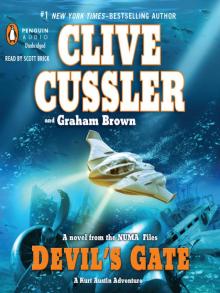 Devil's Gate nf-9
Devil's Gate nf-9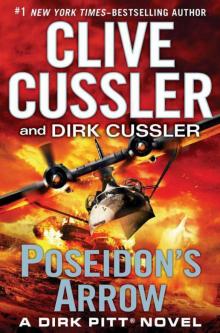 Poseidon's Arrow dp-22
Poseidon's Arrow dp-22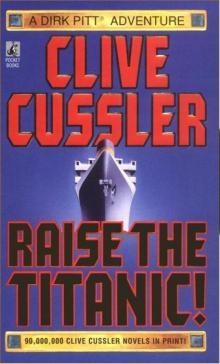 Raise the Titanic dp-4
Raise the Titanic dp-4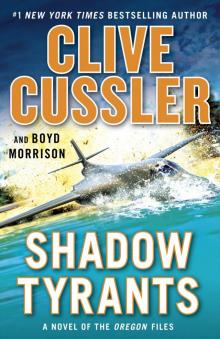 Shadow Tyrants--Clive Cussler
Shadow Tyrants--Clive Cussler Sacred Stone of-2
Sacred Stone of-2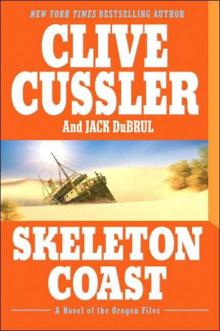 Skeleton Coast tof-4
Skeleton Coast tof-4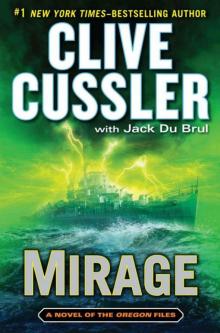 Mirage tof-9
Mirage tof-9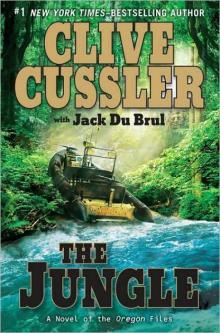 The Jungle of-8
The Jungle of-8 The Emperor's Revenge (The Oregon Files)
The Emperor's Revenge (The Oregon Files)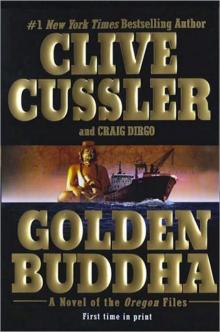 Golden Buddha of-1
Golden Buddha of-1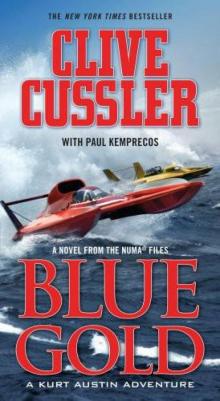 Blue & Gold
Blue & Gold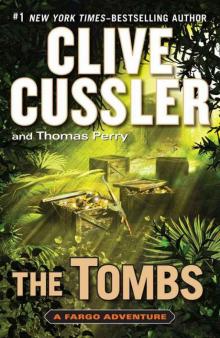 The Tombs fa-4
The Tombs fa-4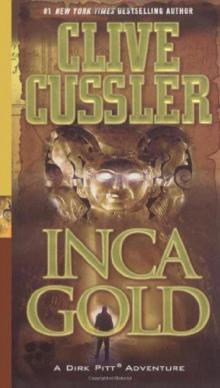 Inca Gold dp-12
Inca Gold dp-12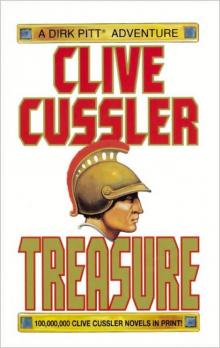 Treasure dp-9
Treasure dp-9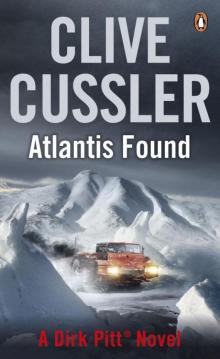 Atlantis Found dp-15
Atlantis Found dp-15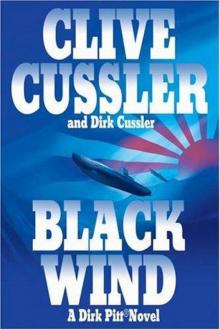 Black Wind dp-18
Black Wind dp-18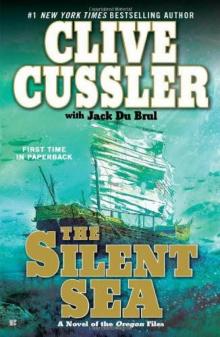 the Silent Sea (2010) tof-7
the Silent Sea (2010) tof-7 The Wrecker ib-2
The Wrecker ib-2 Fire Ice nf-3
Fire Ice nf-3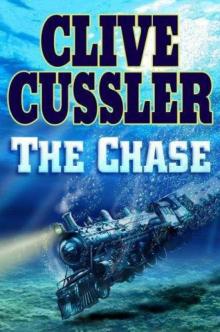 The Chase ib-1
The Chase ib-1 Sahara
Sahara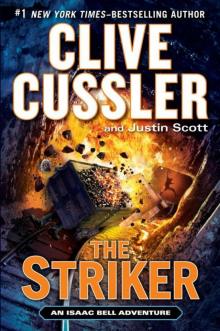 The Striker ib-6
The Striker ib-6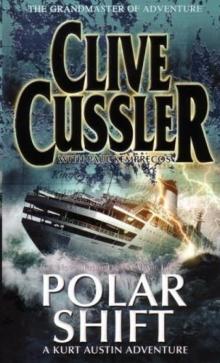 Polar Shift nf-6
Polar Shift nf-6 The Race ib-4
The Race ib-4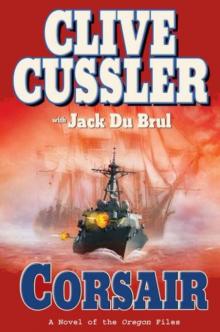 Corsair of-6
Corsair of-6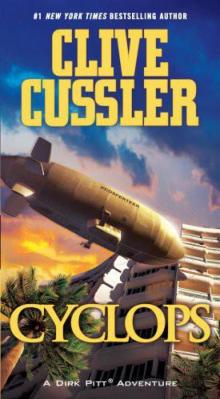 Cyclops dp-8
Cyclops dp-8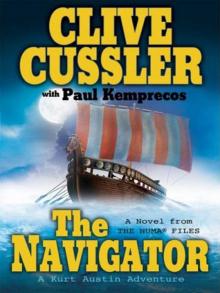 The Navigator nf-7
The Navigator nf-7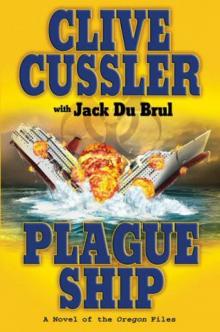 Plague Ship tof-5
Plague Ship tof-5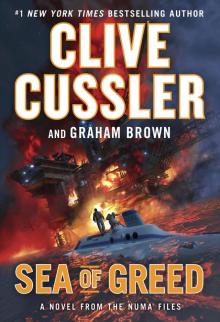 Sea of Greed
Sea of Greed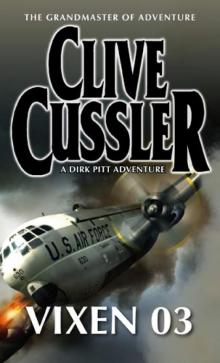 Vixen 03 dp-5
Vixen 03 dp-5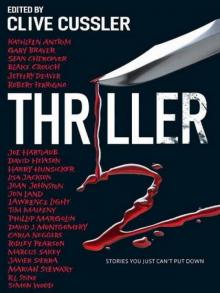 Thriller 2: Stories You Just Can't Put Down
Thriller 2: Stories You Just Can't Put Down